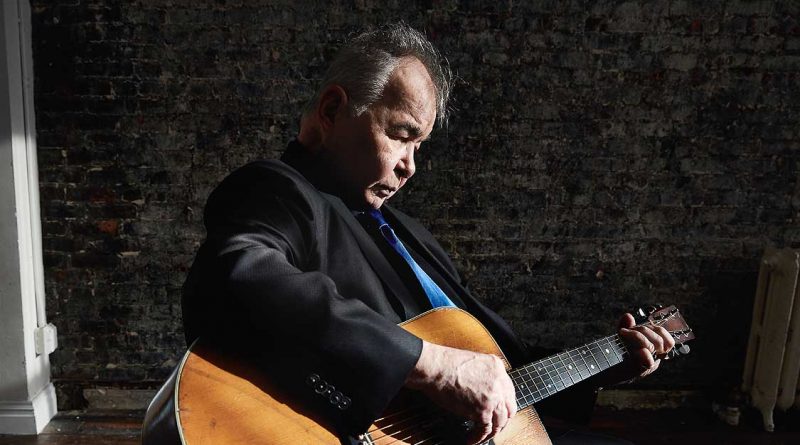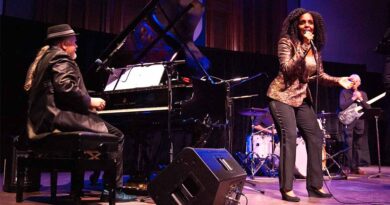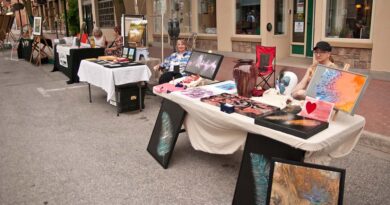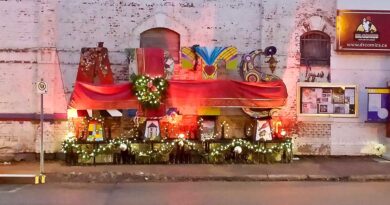This Week In Art/Culture/Entertainment
By John Swartz
So many plays, concerts, and other events have been cancelled. A few groups just packed in the rest of their season. It doesn’t matter if we come out of this at the end of this month, which is looking less likely, and can start planning to see a concert in June because performing groups can’t get up and running just like that..
We haven’t heard from the Mariposa Folk Festival people about the July event. Things could go either way. I spoke with MFF president and festival chair Pam Carter about where things stand.
“Based on the advice and information we have, at the moment we have no changes to our plans, but we are certainly looking at contingency plans in the event we may have to cancel, or may be asked to cancel. What those look like, I don’t know yet,” Pam said.
Now they need to find a different headliner. John Prine died this week of COVDI-19. I think many were prepared for the possibility he wasn’t going to make it despite reports late last week he was recovering, but still in critical condition. Too many people who had symptoms say they started to feel batter and then two days later the symptoms returned and were much worse on the rebound.
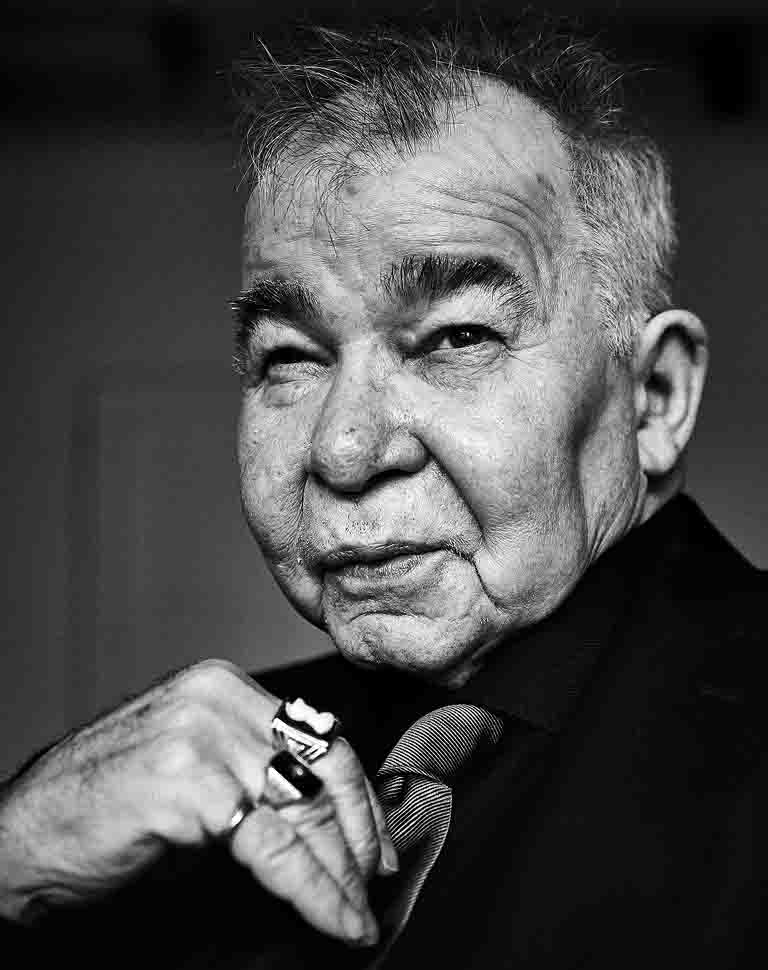
Among singer/songwriters, Prine was part of a holy trinity along with Gord and Bob Dylan. Anyone who writes songs wishes the result is as good as anything those three wrote. So as you can imagine those left behind are as devastated as drummers around the world were on the news of Neil Peart’s death.
In the year we may celebrate the 60th anniversary of the festival, having Prine as the name above the other nightly headliners was symbolic. You know Gord would show up and two out of three ain’t bad I heard someone say once.
Add one more task to the list of preparation details as we approach July. The organizing committee is not small and they have been working on this year’s festival since last summer.
“The volunteers are completing the plan for the 2020 Mariposa Folk Festival. We’re certainly in contact with public health officials and I have video conference and teleconferences almost every day with the industry within Ontario and across the country. Certainly we recognize it’s important for Mariposa to do its part to contain the spread of COVID -19 and our top priority will be the health and safety of the participants, the volunteers, the staff, and the patrons,” Pam said.
She is very aware of the knife edge the festival rests on. Even if things are clear here, almost certainly there will still be people who won’t be able to be at the festival and already other festivals have called off their events.
“Our hearts are out to everyone across the world, our musicians, our production crew, local business, all those people who come together to support the festival. And our hearts go out to Roots North as well. I know it would have been at tough decision, it was taken out of their hands in terms of cancellation, but I have no doubt they will come back stronger than ever.”
It will be a financial hit, but not a killer if the festival doesn’t happen. After the last major storm threatened cancellation of the festival (the year Gord refused to be blown off stage) they wisely started a rainy day fund. The provincial government has also created funding to keep events like Mariposa from collapsing in total forever.
“That’s what I’m getting in the various video conferences that I’m on, is that all levels of government want the sector to survive. Not only do we need to be thinking about what are we going to do today or next month, but how are we going to stay vibrant and alive so we can be part of the recovery process. At the end of all this they need presenters to get the industry up and running again.”
How This All Happened, Part 3
Last week at I said I’d get into the visual side of influence to my approach to arts and culture this week. We’ll get there in a second.
It occurred to me after last week’s column went up I left out a whole branch of musical influence that affected my understanding of what makes good music and good musicians. I realized it as I was listening to music by the band Weather Report. There are others, Herbie Hancock, Steely Dan, Pat Metheny, Al Dimeola and Chick Corea who come to mind as key artists I listened to.
What is interesting is those bands weren’t static. With each recording and tour the band leaders would remain while the other musicians would change. The proverbial revolving door was spinning constantly. I am an album liner note reader, noting the same musicians across several recordings, leading to discoveries of music because a musician I liked on one recording showed up in another band I hadn’t heard yet.
An example of how musicians get around is Joni Mitchell hired Weather Report (minus one player) and Herbie Hancock to be her backing band to record the Mingus album, which she co-wrote and collaborated with Charles Mingus. More notable is she worked out her ideas for the album playing with a group of musicians which included Jerry Mulligan, Tony Williams, John McLaughlin, Jan Hammer, Stanley Clarke and Phil Woods.
I found all these musicians at the end of the 70s and they remain, along with those mentioned last week, central to my identity as a musician and student of music for life.
As the 80s began I transitioned from being a player to a teacher and music arranger. Several of the ‘kids’ I taught would move on and join drum corps on the international level or branch out into other fields of music (I discovered one of my students drumming for Molly Johnson when she headlined the Orillia Jazz Festival a couple years ago).
What happened concurrently was noticing the things going on around the drumline, the movement on the field, the choreography, or drill as we called it then. I also started to pay attention to the uniforms. I had a vision of what I wanted my drummers to look like, how they would move and where they would move because those things affected percussion scores to a degree.
I remember rolling over one night and telling the colour guard instructor (we were married at the time) the flag work they were doing at the end of the drum solo wasn’t working because it didn’t fit with the music I wrote. I broke down how the various drum parts fit together and the overall effect of what was happening and how spinning the flag poles, or waving them in a certain way and time would create a better overall effect (because I wasn’t re-writing the music).
In short I was learning how visuals compliment music and moods. Another example of how visual works with music in another genre is figure skating. I swore off ever watching another Olympics after seeing a skater doing their routine to Buddy Rich’s Channel One Suite and missing every single musical cue. It was the last of umpteen instances of saying to my wife (an avid figure skating watcher) “do these skaters and their choreographers not listen to the music they are skating too?”
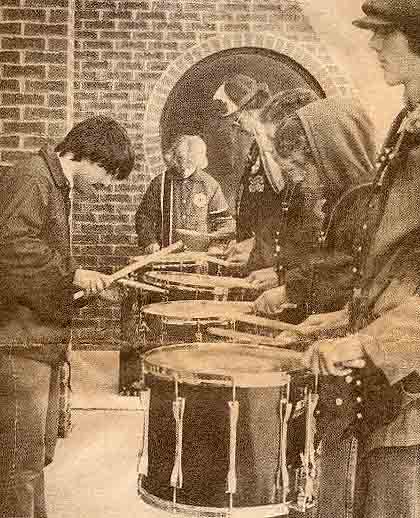
During the 80s I took on more responsibility for show conceptions and design, even management while on the road. I always likened it to moving the Rolling Stones around on tour, but with 100 musicians and 30 dancers, plus support personnel. This gave me transferable skills to be able to work in television production and be a fairly competent theater and film reviewer. As someone familiar with my viewing habits said – OK complained, “don’t you ever just watch a movie for enjoyment?” I had a bad habit remarking about good and bad choices as they were unfolding; everything from camera placement, motion, lighting, sound and dialogue.
Along the way I took photos. Not great ones, but not bad ones either. I was certainly better than my mother who took many fine photos of ceilings and floors. In 1995 I walked into Trillium Cable looking for work. Greg Allen heard my story, most of which you just read, and told me he had a show which needed a producer. I said that was way beyond my expectation, or my understanding of where I could start. He said all the things I had just told him are the things producers do, and I was probably the most qualified of anyone to do the job he’d met. He put a camera in my hands, showed me the basics of video camera operation, said he was always around if I needed help, and sent me out into the world.
Video cameras do not work the same as still cameras, at least they didn’t then. I first thing learned what all the buttons did, then went out and shot. It was not a same day process. I was always interested in electronics too, especially for sound recording, and now I would add video and photography. I was also a manual reader and to many of my colleagues I became a kind of expert not only on the gear, but how to get the same kind of results in their work I was getting in mine. Once, a fellow was quite upset with himself because he forgot to set the color temperature and the people were green. He was happy when I showed him how to use the studio gear to fix his problem. It wasn’t perfect, you make choices and if the curtains aren’t the right color is not as important as the people looking like they came from Earth.
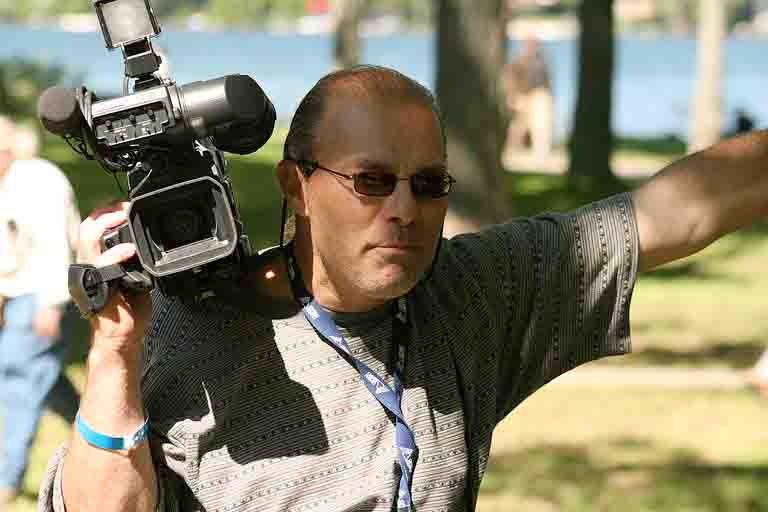
Of course gear isn’t everything. Neither is pointing a camera in the right direction and pushing the shutter or record buttons. My sense of design, the marriage of music and motion and other visual aspects played right into composing shots for video and photographs. I still had to learn some techniques to get what I knew what I wanted to do, but didn’t know how to pull it off. Generally leaving out of frame the things I didn’t want, finding the angle to make the point, and having the timing when people are in the shot to take a picture just right or shoot a scene were the important things I carried over from my drum corps days..
Bob Ross’s television show on how to paint, which ran Saturday afternoon on PBS, is where I learned foundational aspects of colour, proportion, composition, layering a scene, and how light and shadow works. Those aren’t just painter’s concepts only, they work in photography, on stage, and on a football field for a drum corps.
Fortunately, I was happily dragged (the first time) into many art galleries after about ten years of watching Bob Ross – and the same amount working in television and taking photos I got paid for. I think I’ve seen a representative works from all the great masters, which I looked at the same way I watch a movie; how did the colours combine, how does the choice of brush and use of it work, and size matters – at least to me.
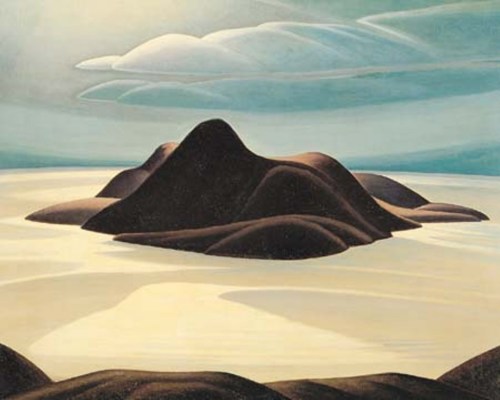
I remember the first time I saw Lawren Harris’s Pic Island. It happened at the front end of my gallery touring and I learned there is no comparison seeing a painting reproduced in an art book, or as a print to seeing the real thing.
I also noticed I was using the things I learned about choreography, staging and colour, combined with my intensive training of rhythm, timing and how to execute a performance in evaluating a theatrical performances. I was scared out of my mind the first time I saw a Sunshine Festival play for review, wondering if I’d be any good at writing about what I saw. After the second play of the season David Fanstone and I were chatting and he said, “I’ve asked around in Toronto, nobody knows you. What’s your background? How do you know so much about how plays work?” I explained drum corps to him, drawing the parallels to theater. Once I was done, he said it explained how I was able to bring into my reviews things that mattered, but most other reviewers didn’t even notice.
Next week I’m going to wrap this puppy up and tie together some loose ends.
![]()



![]()
Mariposa Stories
Dennis Rizzo and Ross Greenwood, editors and publishers of the second volume of Mariposa Exposed (yup, Vol. 2 is coming) want some really short, 100 words approximately, stories from you about anything you can be the voice of during this period of finding out – who those people are in your home, where you put the house keys 5 years ago and couldn’t find them, and ‘you know those people next door? No, do you know them?” Send them to me at johnswartz@orilliapronet.com with the subject line – My Story for Mariposa, I’m stickhandling this project within a project for them.
Artist Help
If you missed last week’s rundown of government programs being put in place to help artists financially in light of the shutdown of business, check it out. In brief there are programs being offered by the Ontario Arts Council, Ontario Cultural Attractions Fund, or Trillium grants, the Ontario Music Fund, the Tourism Recovery Development Fund, Destination Ontario and there are three refundable tax credits for contract workers and freelancers. Municipalities will also be matching partners with the province in a $150,000 program to help outfit artists to be able to stream concerts and presentations.
(Photos Submitted) Main: John Prine 1946 – 2020

